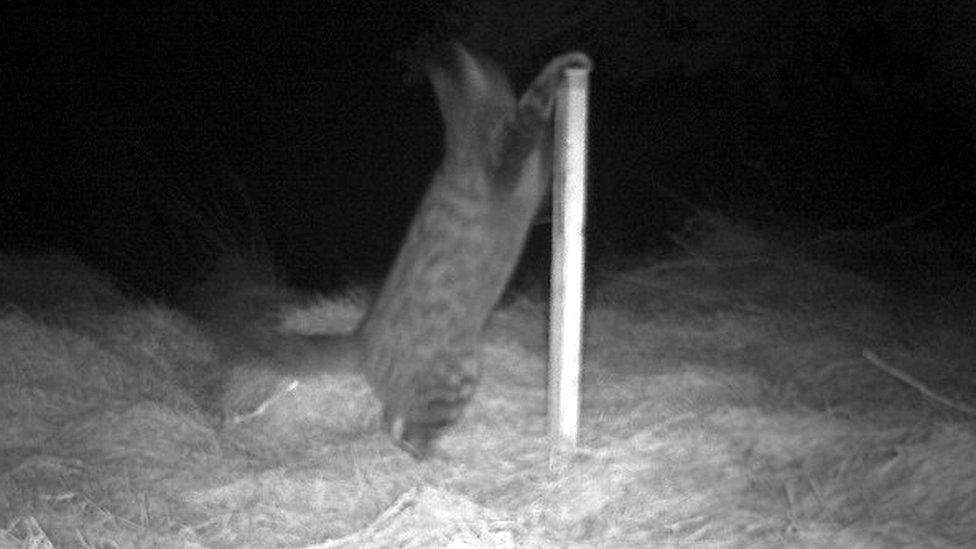Fears over tree felling threat to wildcats in Clashindarroch Forest
- Published
Wildcat Haven captured footage in the forest of one of the largest wildcats ever recorded
A wildcat group is concerned about the impact of tree felling on the population of the animals in Clashindarroch Forest in Aberdeenshire.
Wildcat Haven, which has footage of a large cat in the forest, claims the Forestry Commission is carrying out "extensive commercial exploitation".
It also fears plans for two large wind farms will threaten the wildcats.
Forest Enterprise Scotland (FES) said the management of forests created a very good environment for wildcats.
FES is an agency of the Forestry Commission, which manages Scotland's national forest estate.
The agency said that if the wind farm proposals for the area went ahead, they would be subject to a full environmental impact assessment, public consultation and planning processes.
It also said the turbines themselves would cover a relatively small area and the rest of the area within the boundary and near it would be restocked.
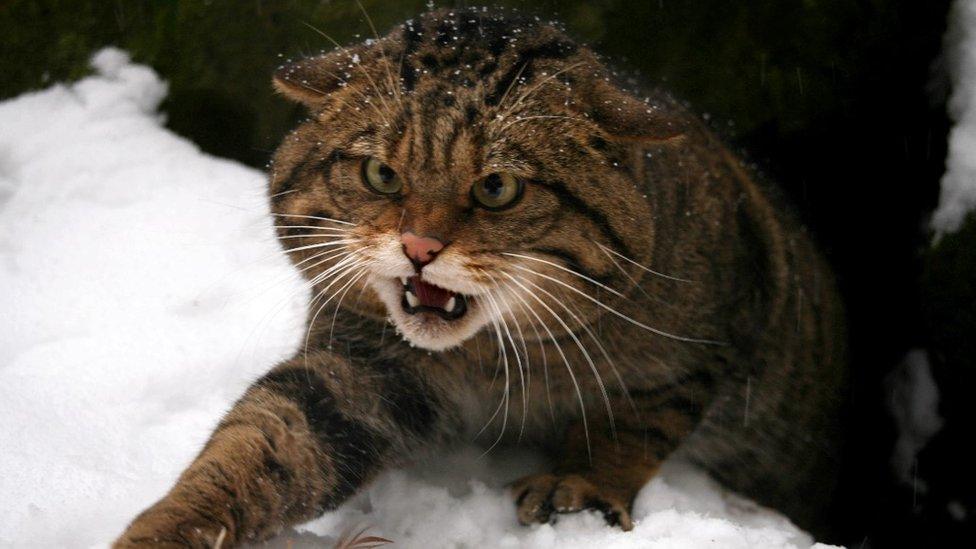
The Scottish Natural Heritage (SNH) and Scottish Wildcat Action (SWA) project has named the area as one of its five priority sites for wildcat conservation.
The independent group Wildcat Haven said it had identified at least 13 wildcats living there, including the large wildcat which has been nicknamed the Beast.
The group is concerned that the clearing of trees and the installation of the planned wind farms threaten considerable disturbance to the wildcats which could lead females to abandon or even eat their kittens.
Wildcat Haven's Kev Bell said he asked Forestry Commission Scotland to cease its actions more than a year ago.
"We're appalled by what's going on," he said. "The exact area where we've filmed the Beast just weeks ago, is right now being clear-felled, right when wildcats are breeding and raising kittens.
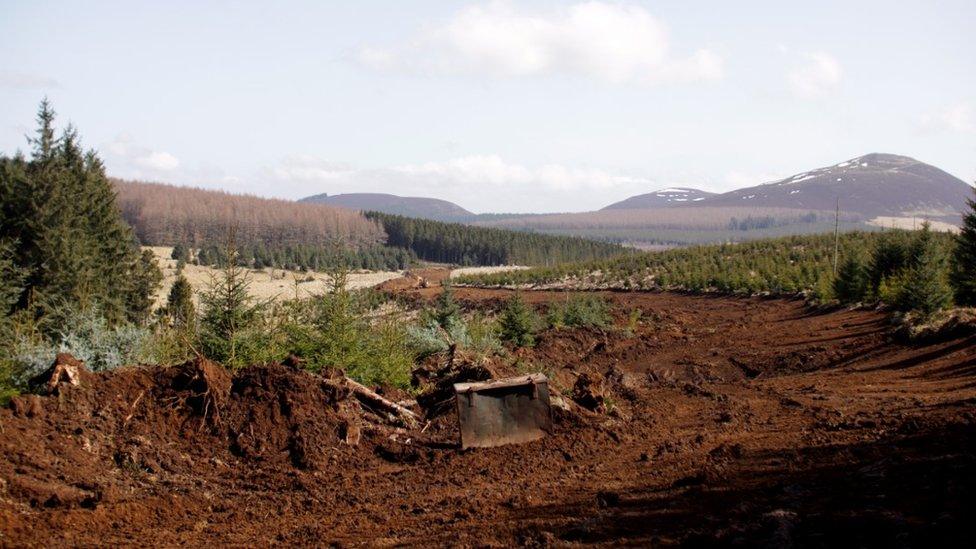
Wildcat Haven has called for the widespread tree felling to stop
"This is the last viable population of Scottish wildcats left anywhere, and Forestry Commission Scotland, whilst publicly claiming to be protecting them, are actively chopping down their home around them. It's a national scandal; we're at risk of losing our iconic wildcat to these thoughtless actions."
A Freedom of Information request from Wildcat Haven showed that in an email from Forestry Commission district manager John Thompson to senior Forestry Commission Scotland staff said that wildcat presence in Clashindarroch may cause a "downstream surprise".
The email said: "We have two very significantly-scaled wind farm proposals in the pipeline for Clashindarroch... they are probably below the radar for most at the moment.
"Significant clearfelling is likely... I will be surprised if the presence of Scottish wildcat does not become a significant issue. I flag this simply to ensure that we do not create any hostages to fortune regarding the scale of our felling operations."
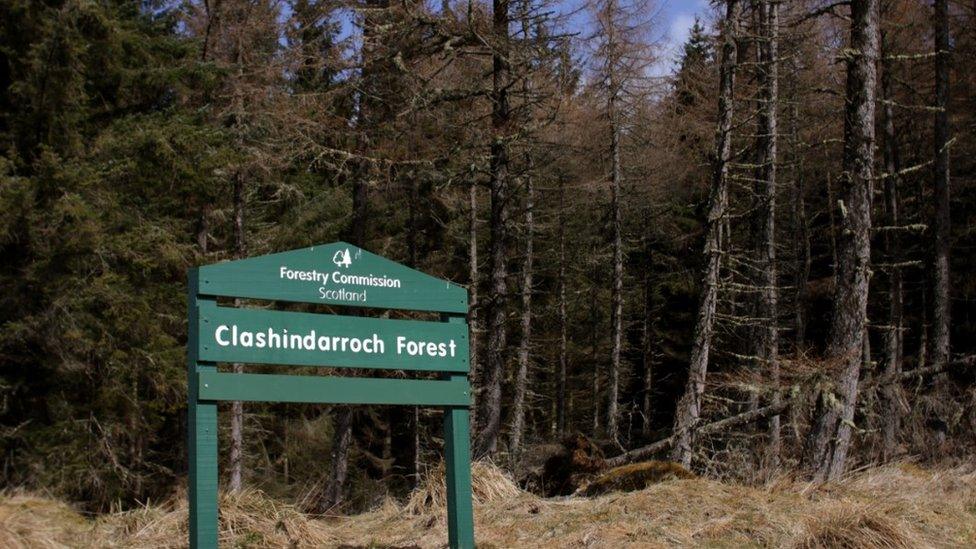
Wildcat expert Steve Piper said: "Everyone knows how sensitive to disturbance wildcats are, especially at this time of year bringing up kittens. FCS, SNH, and their 20 partner organisations at Scottish Wildcat Action love telling everyone about their priority conservation areas, but these must be PR fluff if a key partner is actively clear-felling one.
"Almost £2m of public and lottery money went to those organisations to protect the wildcat, and this is what we get; loo roll, wind farms, and emails describing Scottish wildcats as 'a significant issue' which may make everyone 'hostages to fortune'."
Steve Sleigh, a member of the Wildcat Haven team. added: "Clashindarroch Forest must be protected from further commercial exploitation immediately and without compromise, it's too important.
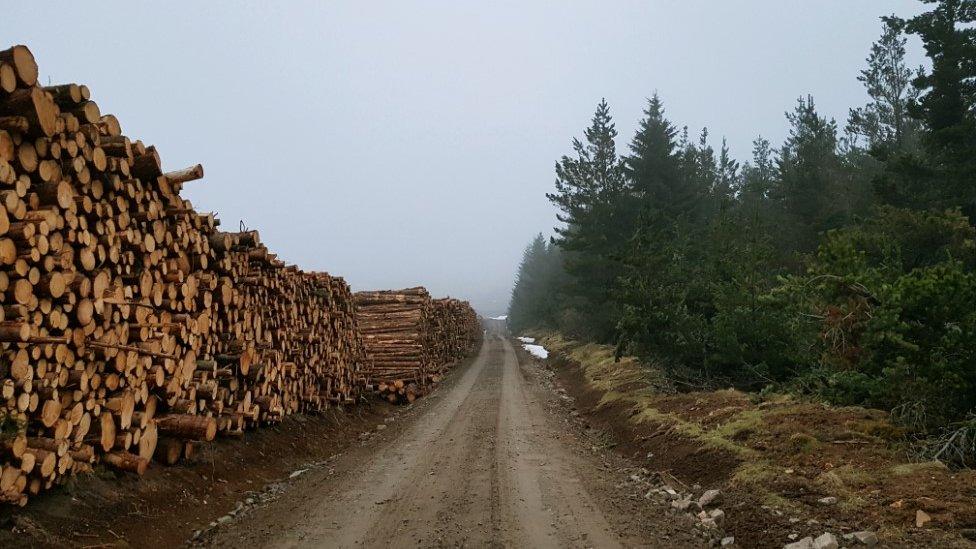
"We've got plenty of other forests for wood pulp, plenty of other hills for wind turbines; this place needs to be left alone, and we're determined to get Clashindarroch full legal protection from commercial exploitation.
"We need MSPs to bring this to parliament; Nicola Sturgeon needs to understand the Scottish wildcat is about to go extinct on her watch."
Wildcat Haven has launched a petition to the Scottish government asking for the protection of Clashindarroch.
'Comprehensive survey'
A spokesman for Forest Enterprise Scotland (FES), the agency responsible for managing the National Forest Estate on behalf of the Scottish government, said: "The management of commercial forests creates a very good environment for wildcats with more edge habitats that they use to move around, and clear fell and restock sites that are rich with voles and ideal for foraging.
"Wildcats can be present in the forest and yet not be in the vicinity of planned felling operations and the reason that commercial forestry can take place in Clashindarroch is precisely because a comprehensive survey has been done. This now includes satellite tagging cats to track their movements and to better inform management decisions."
The spokesman added that FES's operations took into account wildlife surveys of the immediate and wider surroundings and were scrutinised by specialist FES environment teams and by experts within Scottish Wildcat Action.
"Any issues that raise concern are mitigated in accordance with their advice and, where appropriate, opportunities are taken to improve wildcat habitats," he said. "This includes suspension of high-profile recreational events."
'Scientific scrutiny'
Dr Roo Campbell, priorities area manager for Scottish Wildcat Action, said one of its main aims was to save the Scottish wildcat from extinction and, with its partners including FES, it was "fully committed to the project and would not engage in any activity which might contradict that aim".
Dr Campbell added: "FES managed commercial plantations retain some of the best remaining populations of wildcats and we work very closely with FES to firstly ensure the wildcats in our priority areas continue to be protected and secondly identify how FES management approaches can be used to inform wildcat conservation in other commercial forests.
"We have conducted intensive camera surveys across the forest over the past three winters following an initial survey in 2013-2014. This information is shared with FES as part of our work to conserve wildcats in the forest.
"We cannot comment on any evidence that Wildcat Haven may or may not hold regarding wildcats, nor the methods they might use, as they do not share such information with us and do not open up the details of their work to proper public and scientific scrutiny."
- Published17 April 2018
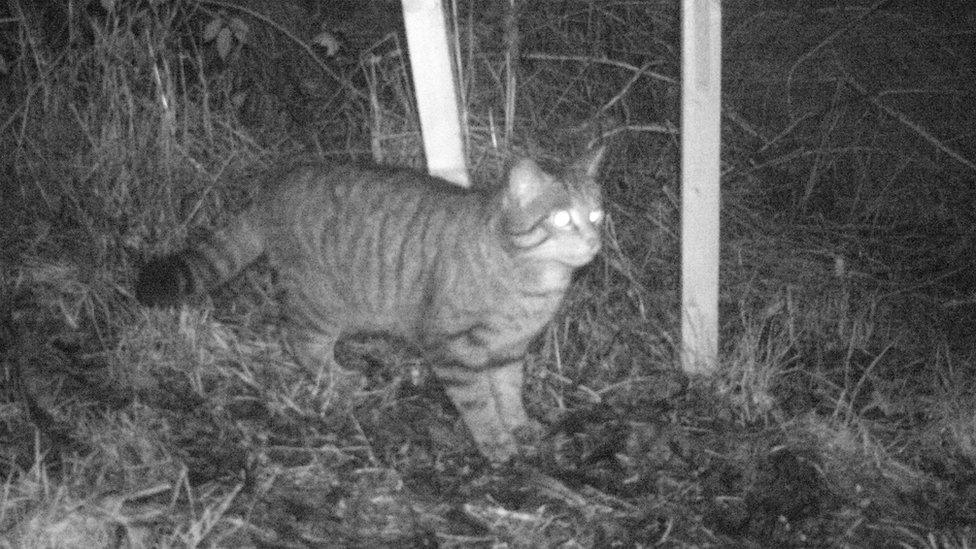
- Published28 March 2018
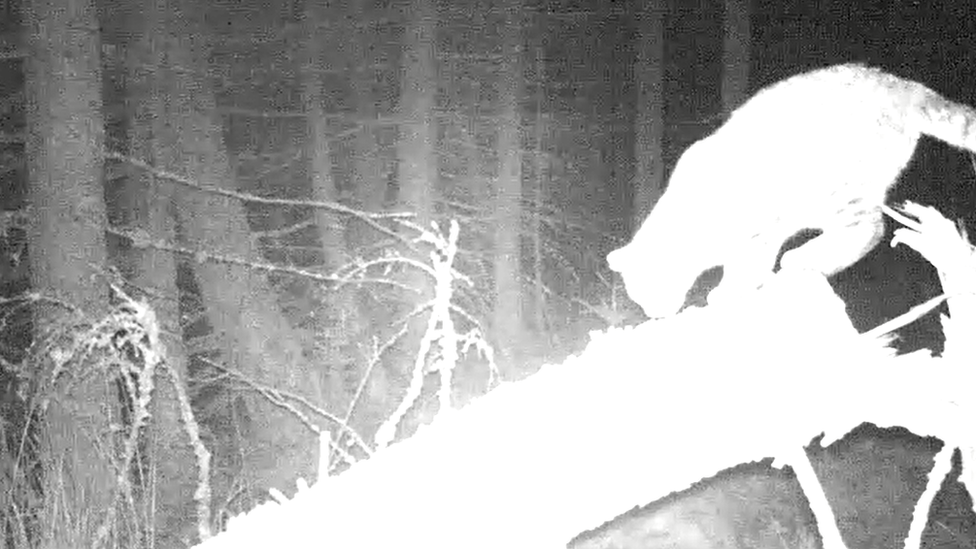
- Published17 August 2017
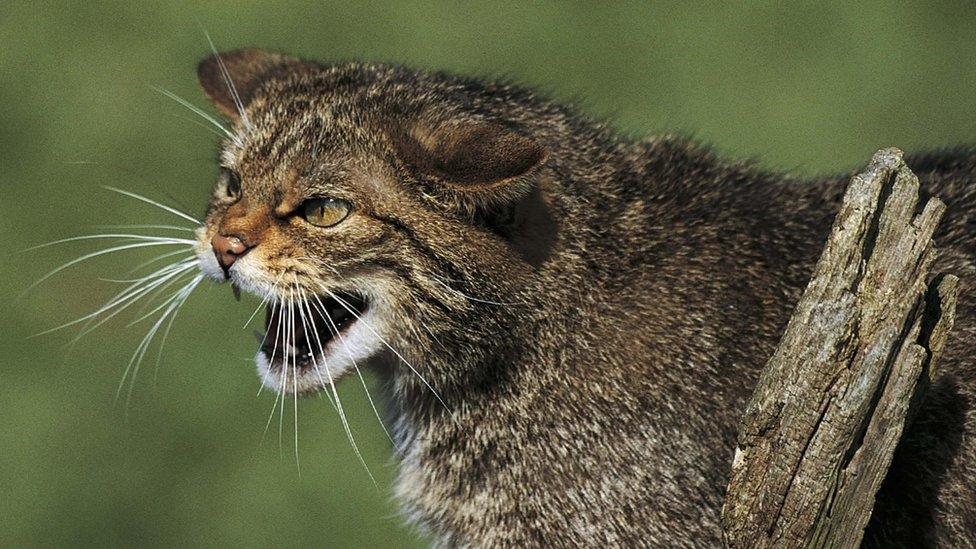
- Published16 August 2017
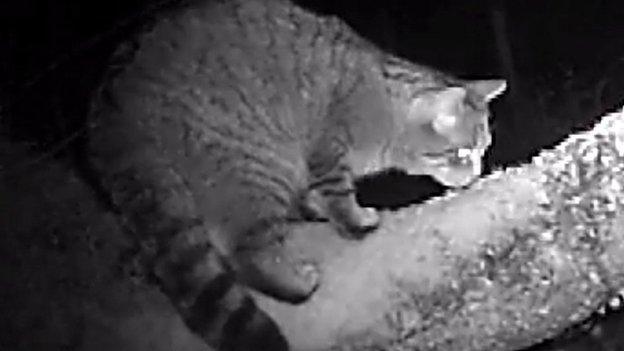
- Published10 February 2017
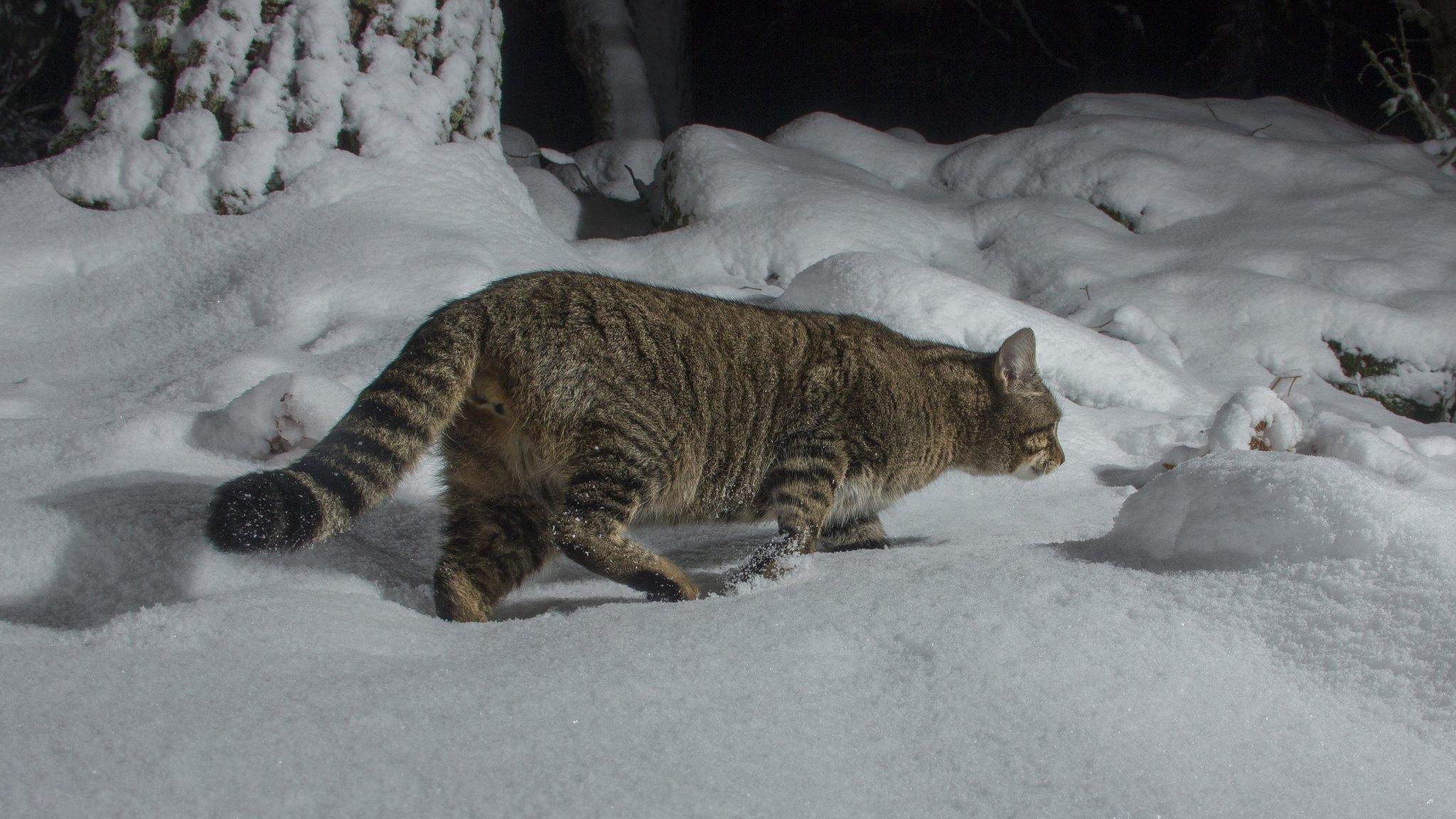
- Published9 January 2017
